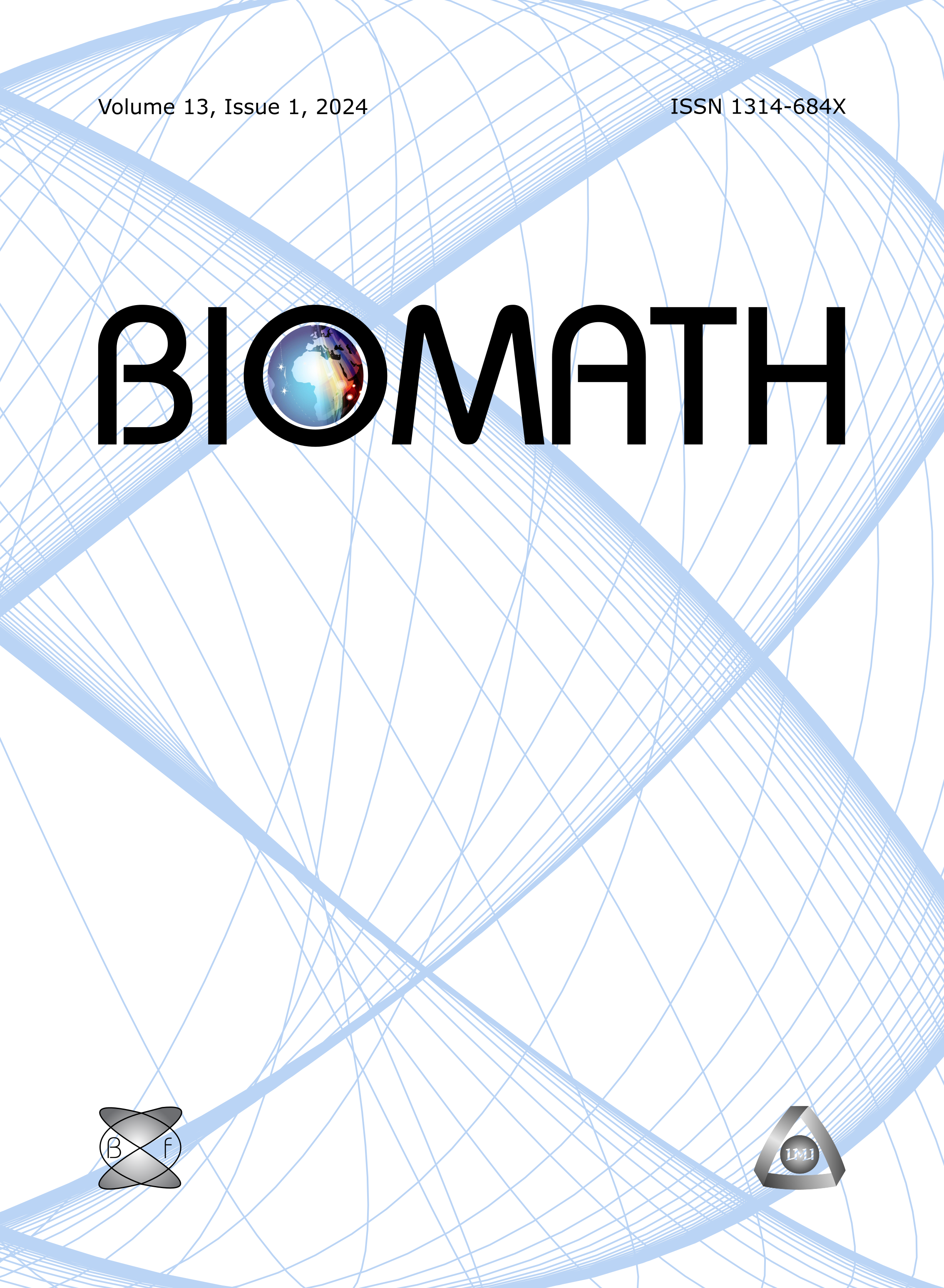Effect of increasing stenosis over time on hemodynamics
DOI:
https://doi.org/10.55630/j.biomath.2023.10.067Keywords:
Radius reducing factor, Increasing stenosis over time, Impedance, Distortion, Aortic stenosisAbstract
A hard layer, that develops in the inner wall of an artery, makes the blood flow difficult and it can harm the cardiovascular system because of the abnormality in blood supply. The problem becomes worse when the layer gets thicker due to increased deposition over time. The effect of increasing stenosis on flow characteristics in an artery is studied by taking blood as a non-Newtonian fluid. To address the effect of increasing stenosis over time, a non-dimensional temporal term is included in the geometry of stenosis and is applied to derive the flow parameters like velocity profile, volumetric flow rate and pressure drop. The maximum and minimum shear stress ratio and pressure drop ratio are also calculated using the term. The results obtained are analyzed to show the effect of increasing stenosis over time on these flow parameters. Volumetric flow rate, pressure drop and its ratio, and shear stress ratio are compared with the ratio of the thickness of the stenosis and normal artery radius while analyzing the results. It is found that the volumetric flow rate decreases with time, pressure drop and its ratio increases with time, and the shear stress ratio decreases as the time elapses. The result shows that it is appropriate to include the temporal term to understand the effect of increasing stenosis over time on blood flow parameters. The aim of this article is to correct the drawback that evolves while supposing the symmetric shape of the stenosis.
Downloads
Published
Issue
Section
License
Copyright (c) 2023 Pushpa Nidhi Gautam, Chudamani Pokharel, Ganga Ram Phaijoo, Parameshwari Kattel, Jeevan Kafle

This work is licensed under a Creative Commons Attribution 4.0 International License.
The journal Biomath is an open access journal. All published articles are immeditely available online and the respective DOI link activated. All articles can be access for free and no reader registration of any sort is required. No fees are charged to authors for article submission or processing. Online publications are funded through volunteer work, donations and grants.
Authors who publish with this journal agree to the following terms:
- Authors retain copyright and grant the journal right of first publication with the work simultaneously licensed under a Creative Commons Attribution License 4.0 that allows others to share the work with an acknowledgement of the work's authorship and initial publication in this journal.
- Authors are able to enter into separate, additional contractual arrangements for the non-exclusive distribution of the journal's published version of the work (e.g., post it to an institutional repository or publish it in a book), with an acknowledgement of its initial publication in this journal.
- Authors are permitted and encouraged to post their work online (e.g., in institutional repositories or on their website) prior to and during the submission process, as it can lead to productive exchanges, as well as earlier and greater citation of published work (See The Effect of Open Access).

